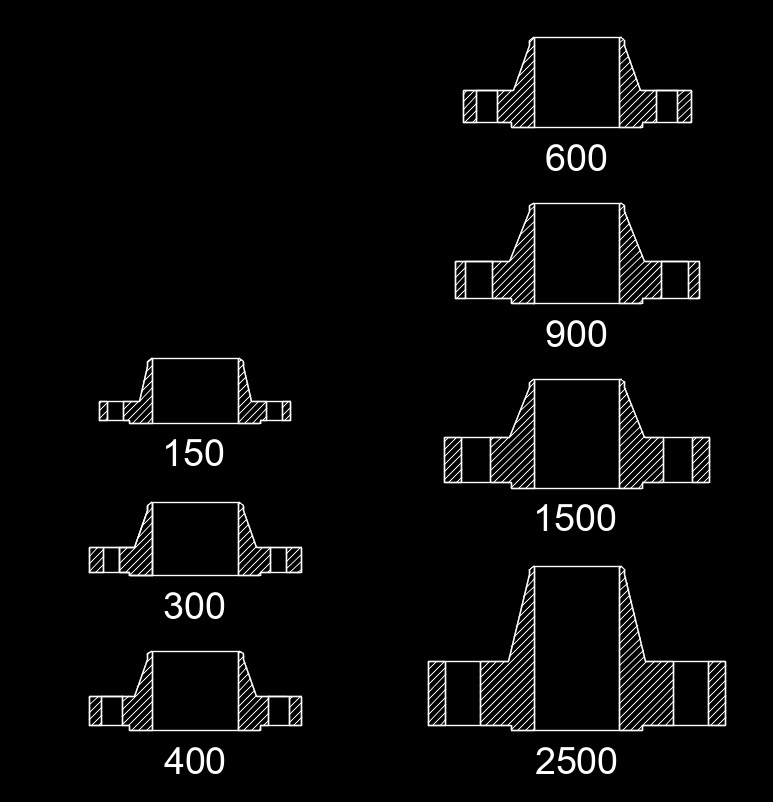Weld Neck Flange
 The weld neck flange, abbreviated as WNF, is a flange type that is usually used with pipes, as opposed to pressure vessels. The design of the flange allows for a full penetration weld at its base where it connects to the pipe. This weld can be X-ray inspected for quality control.
The weld neck flange, abbreviated as WNF, is a flange type that is usually used with pipes, as opposed to pressure vessels. The design of the flange allows for a full penetration weld at its base where it connects to the pipe. This weld can be X-ray inspected for quality control.
The weld neck flange comes in two types, regular and long. The hub of the weld neck is designed to reduce the stress at the base of the flange. Regular weld neck flanges are used with buttweld fittings and connecting two pieces of pipe together. Long weld neck flanges are usually used with equipment and vessel nozzles. A long weld neck flange is rarely used with pipe.
Both types of flanges are bored to match the inside diameter of the pipe or fitting to which it will be welded to. However, if the bore does not match, the inner diameter can be ground out to match the larger bore pipe. Weld neck flanges are suitable where high pressure, extreme temperatures, shear impact and vibratory stresses apply.
weld Neck Flange Advantages and Disadvantages | |
|---|---|
| Advantages | Disadvantages |
|
|
Weld Neck Flange DatasheetsThe datasheets we have on this site are shown below. For simplicity sake, only datasheets that adhere to B16.5 are shown. ASME B16.5 covers flange dimensions from ½” to 24”. For sizes larger than this, please visit our flange datasheets page. | |||
|---|---|---|---|
| Class | Flat Face | Raised Face | Ring Type Joint |
| ANSI 150 | WN Flange ANSI 150 FF (in) | WN Flange ANSI 150 RF (in) | WN Flange ANSI 150 RTJ (in) |
| ANSI 300 | WN Flange ANSI 300 FF (in) | WN Flange ANSI 300 RF (in) | WN Flange ANSI 300 RTJ (in) |
| ANSI 400 | WN Flange ANSI 400 FF (in) | WN Flange ANSI 400 RF (in) | WN Flange ANSI 400 RTJ (in) |
| ANSI 600 | WN Flange ANSI 600 FF (in) | WN Flange ANSI 600 RF (in) | WN Flange ANSI 600 RTJ (in) |
| ANSI 900 | WN Flange ANSI 900 FF (in) | WN Flange ANSI 900 RF (in) | WN Flange ANSI 900 RTJ (in) |
| ANSI 1500 | WN Flange ANSI 1500 FF (in) | WN Flange ANSI 1500 RF (in) | WN Flange ANSI 1500 RTJ (in) |
| ANSI 2500 | WN Flange ANSI 2500 FF (in) | WN Flange ANSI 2500 RF (in) | WN Flange ANSI 2500 RTJ (in) |

Tags: Pipe Flange

